If you’re looking to buy a new guitar or bass amplifier, then one of the first decisions you’ll need to make is whether you want a combo amp, or a stack amp. In this article, I’ll explain the pros and cons of both setups so you can decide which works best for you.
The Quick Answer
Combo amplifiers are cheaper and easier to use than stack (head and cabinet) amps. Stack amps offer more versatility and volume than combo amps which are more limited. Combo amps usually work best for beginners and at-home use, whilst stack amps are more suitable for on-stage.
| Combo Amplifier | Stack Amplifier |
| All-in-one design | Separate head and cabinet units |
| Cheaper | More expensive |
| Easier to set up | Harder to set up |
| Compact and space saving | Can take up a lot of room |
| Best for beginners | Best for gigging |
| Less versatile | More versatile |
| Lower maximum volume | Higher maximum volume |


Stack Amps
There are two components needed for any amplifier setup, the head and the cabinet.
- Head: this part determines the tone and the wattage. It’s the bit that has all the different controls on.
- Cabinet: this is also known as the speaker unit and it works by converting the electrical energy from the head into mechanical energy which then converts into sound!
With a stack amp setup, the head and cabinet are separate parts which are then connected together using speaker cables (don’t use your regular guitar cables). There are a few things you need to know to correctly pair a head and cabinet:
- Power (measured in watts): your cabinet must have at least the same power handling (ideally more) than what the head is capable of producing. Some cabinets have multiple speakers within them, and you can total up the power handling of them up to give you the maximum handling capability. Your cabinet can be capable of handling more power than the head produces, it just can’t handle less to be compatible.
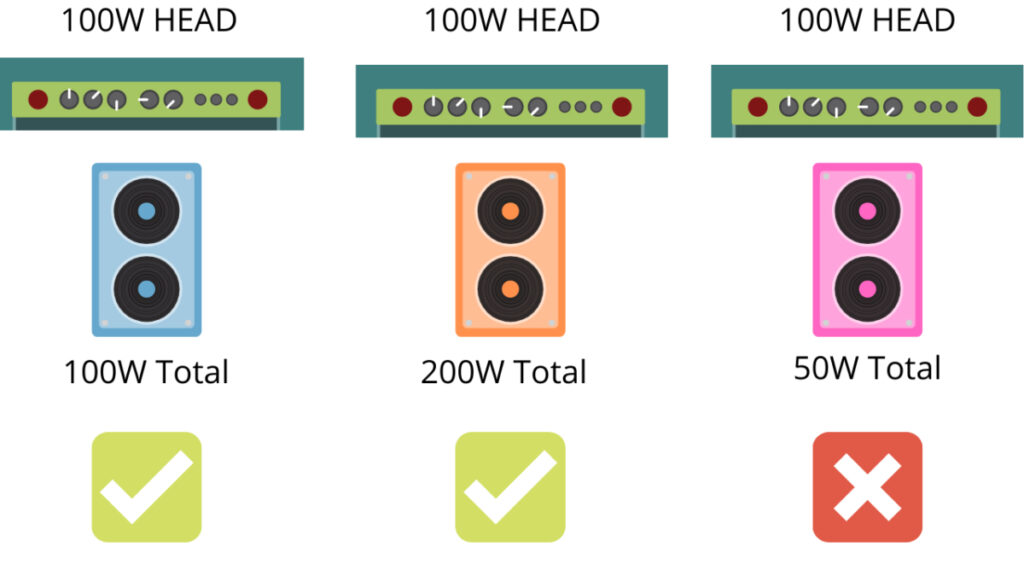
- Impedance (measured in ohms): you need to match the impedance of your cabinet and head. This is straightforward when working with one head and one cabinet. When using multiple cabinets, you need to factor in the impedance load of both.
Example:
- Head has an impedance load of 8 ohms.
- If you are using two cabinets which both have an impedance load of 16 ohms when used independently, when paired together, this works out as 8 ohms each. This is fine to pair with the head.
- If you are using two cabinets which both have an impedance load of 8 ohms when used independently, when paired together, this works out as 4 ohms each. This is NOT fine to pair with the head as it falls below the minimum impedence.
Some heads will have multiple output types, usually either 8 ohms or 16 ohms, so make sure you pair the cabinet with the correct one. Again, if you are using a single 16 ohms cabinet, plug it into the 16 ohms jack. But if you are using two 16 ohms cabinets, you’ll need to plug them into separate 8 ohms jacks.
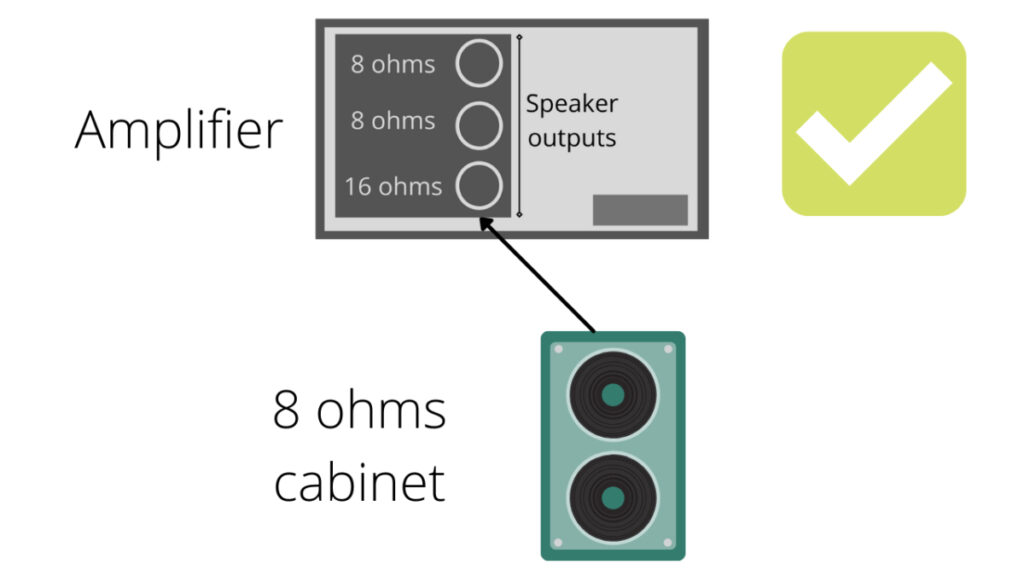
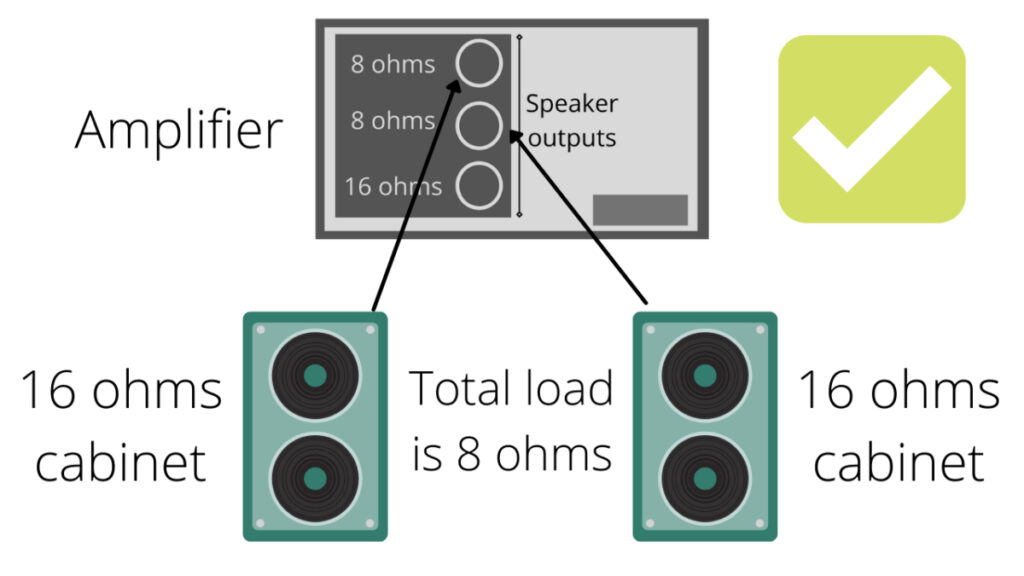
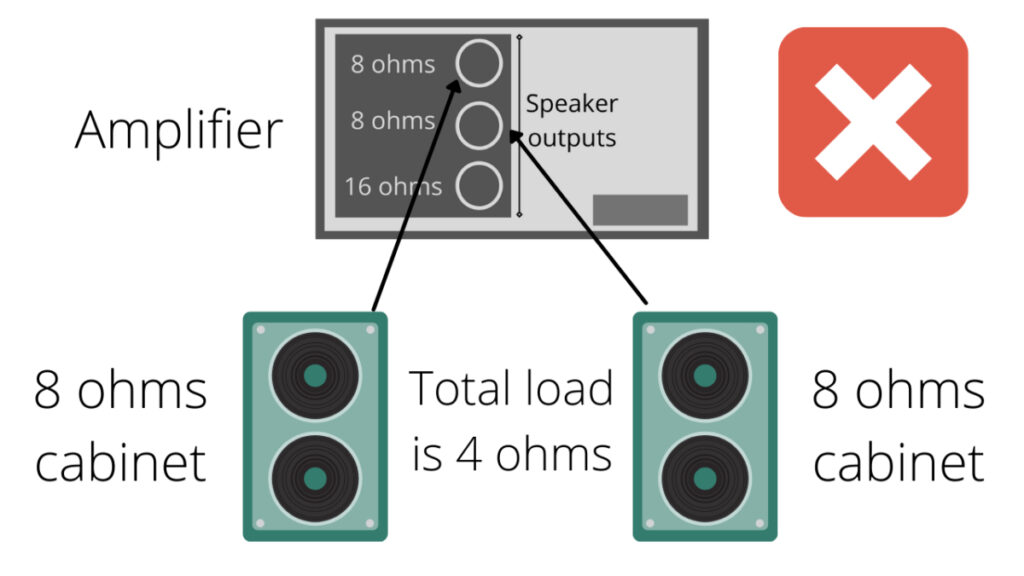
Check out this video to listen to a video explanation by CSGuitars on YouTube.
Pros and Cons
Here is a table to compare the advantages and disadvantages of stack amplifiers.
| Pros | Cons |
| Versatility – you can take the head gigging and pair it with other cabinets | More expensive – as you need to purchase two pieces of equipment |
| Transportability – for the same reason above, you only need to take the head gigging | More complicated – you need to consider the power and impedance ratings |
| More volume – as the cabinet is usually larger than in a combo amp | Unnecessary extra equipment – a combo is sufficient for a lot of venues |
| More tones – pairing the head with different cabinets will create different sounds | Takes up space – stack setups are less compact which isn’t great for using at home |
Full Stack vs Half Stack
A half-stack amp refers to a head unit on top of one cabinet, whereas a full-stack refers to a head unit on top of two cabinets in a vertical stack. Half-stacks are usually sufficient for most venues, however a full-stack will provide more volume, although this is at the expensive of carrying more equipment around.
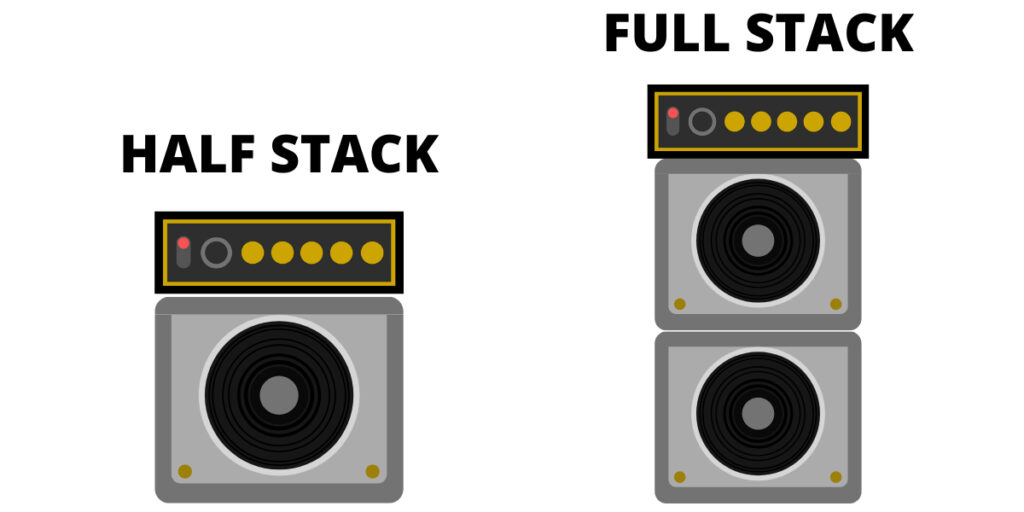
Combo Amps
Combo amplifiers are much more straightforward than stack amplifiers and incorporate the head unit and cabinet into an all-in-one piece of equipment. Whilst it’s very possible to get combo amps costing over $2000, you can also get entry-level combos which cost around $100. The same can’t be said for stack amps which are aimed at more experienced or professional players.
They are easy to setup, compact and cheap making them very popular options. You can also use a combo as as a head or cabinet in a stack system as described above if you find yourself too limited. Check out my article on using a combo as a head or cab to learn more.
Pros and Cons
Here’s a table to compare the pros and cons of combo amps.
| Pros | Cons |
| Inexpensive – this method is cheap as you only need on piece of equipment | Heavy – if you only need the “head” part for gigs and are using a cabinet at the venue then they add unnecessary weight |
| Good for beginners – combo amps are uncomplicated and available at low prices | Less volume – cabinets in combo amps are smaller than external cabinets |
| Compact – they don’t take up much space making them excellent for home use | Limited tones – you are stuck with the tone that your built-in cab creates |
| Easy to use – you don’t need to worry about power or impedance ratings since there’s nothing to pair | Not great for on stage – due to the lack of versatility and volume |
Guitar Center are always the first place I look at when I’m interested in a new amp because have a huge range of amplifiers for sale and always have some excellent deals on. Here’s a link to take you directly to Guitar Center’s amp range so you can see all the offers available at the moment.
Which Should You Get?
This is a difficult question to answer without knowing your situation, so here are a few scenarios and the option I would recommend for each.
Example #1
- A complete beginner
- Best option: Combo
- Combos are always best for beginners because they’re much cheaper and easier to setup.
Example #2
- Player looking to use the amp at home only.
- Best Option: Combo
- Combos take up less space, are cheaper and the extra volume and versatility of a stack is not really needed here.
Example #3
- Player looking to start gigging.
- Best Option: Stack
- Stacks are louder, more versatile and better for gigging than combo amps which are much more limited.
In the market for a new amplifier? Check out my complete amplifier buyer’s guide to help narrow down your selection and find the perfect amp for you.
